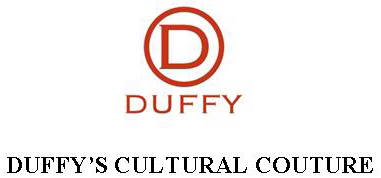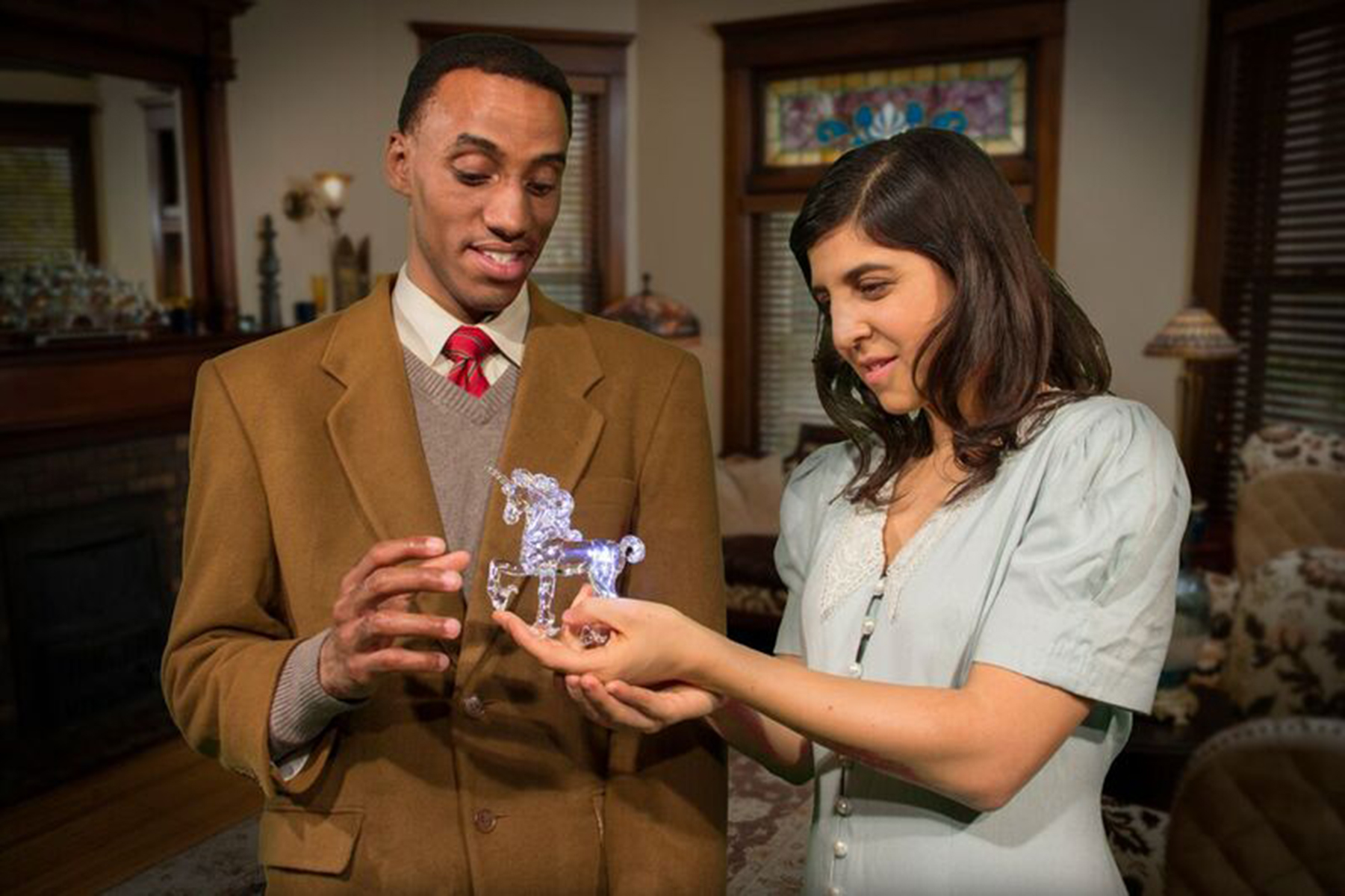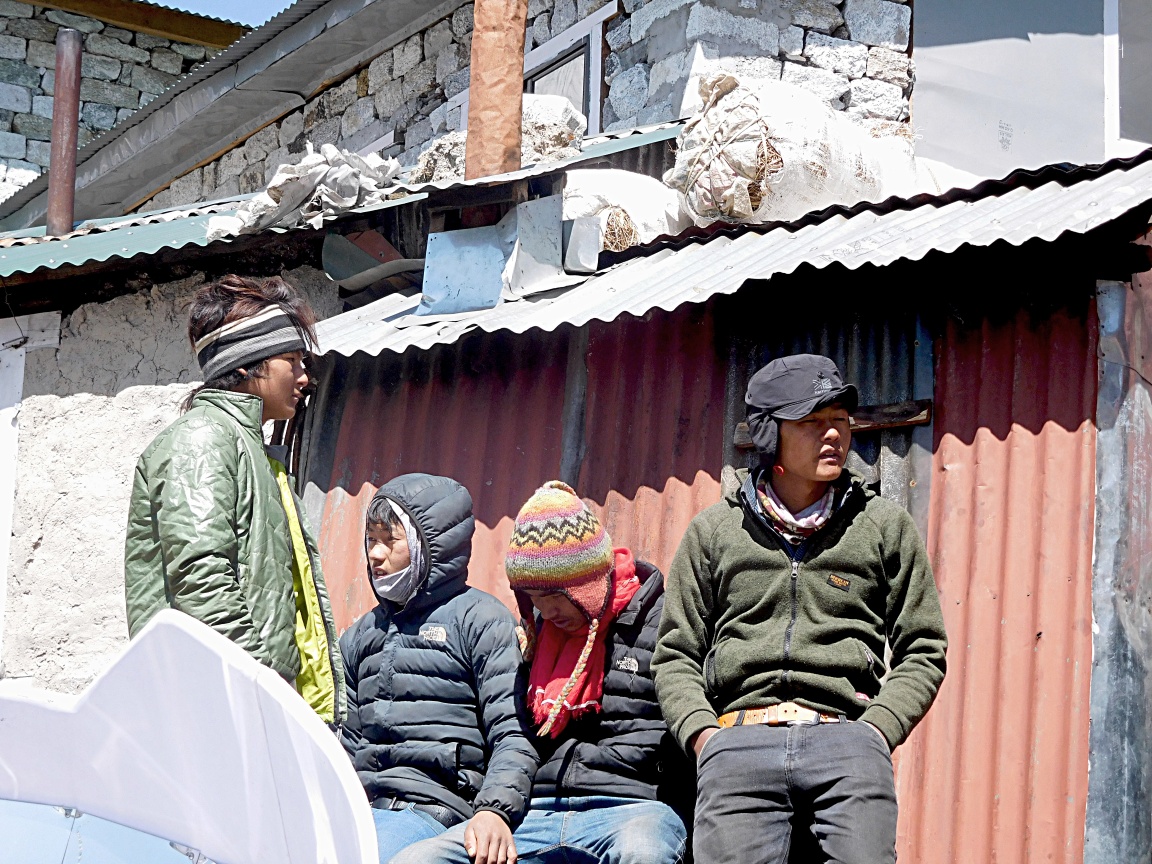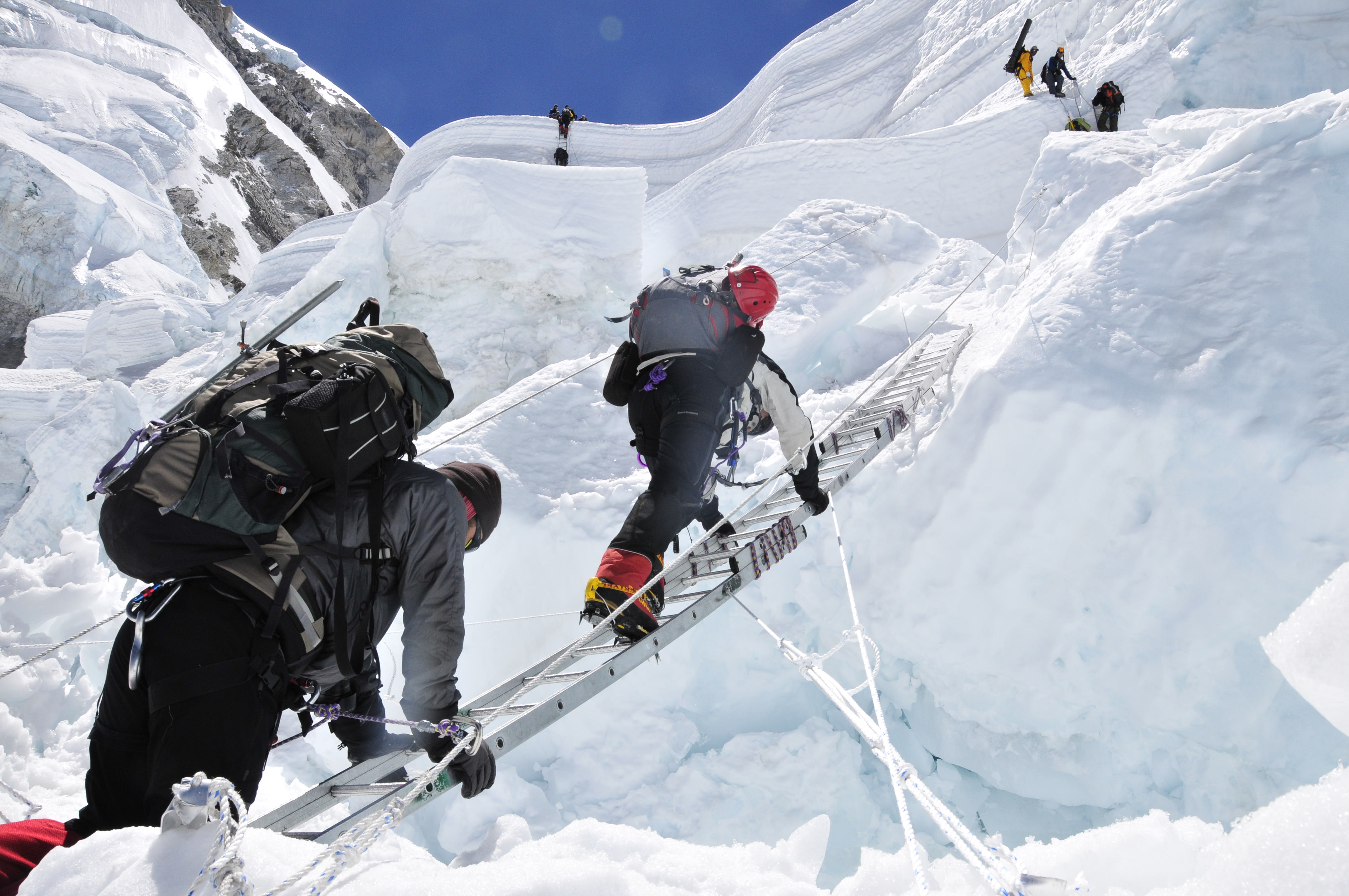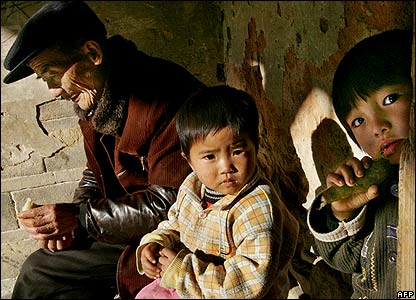Mountain Leadership
Topic: COMMUNITY INTEREST
Mountain Leadership

Leading organizational change is like climbing a mountain. Transformational leaders must prepare to lead change, understand the process and nature of change, and provide the essential gear so that those involved can be successful. I will share a personal experience as a hiker and change leader to provide a guide for leading organizational change.
I recently took a holiday to climb Mt Everest to Base Camp. This was the most challenging hike I have ever done in my life. Last August, I did Mt Kilimanjaro in Africa and Mt Everest EBC is 30,000% harder. I had to prepare myself for the hike of a lifetime prior to my Everest journey. This preparation was not just physical in nature, but mental in nature as well. How to keep yourself going when you no longer can? Overcome this obstacle allows you to see the peak of a lifetime.
Mountain climbers are like transformational leaders, who must prepare to lead change, understand the process and nature of change, and provide the essential gear so that those involved can be successful.
With this thrill of climbing of the toughest mountains in the world, we studied a map of the trail to base camp. This map provided me and my team insights to being a change leader. This trail map certainly addresses the preparation, process, nature, and safety components of hiking Everest. This map can also be viewed as a guide for leading organizational change. Preparation is key. A smart and safe hiker is a prepared hiker. You must prepare for the worse when climbing Mt Everest.
Training is very important in preparing yourself for both hiking and organizational change. Hiking is a highly aerobic sport; it is not an activity for couch potatoes. To get in shape for a strenuous hike, I cross-trained—ran, bicycle, and work out on a stair-stepper, and ran the Princeton University stadium on weekends for hours. We carried weights our backpacks while mowing our lawn, walking to get milk, go out for pizza, just to get in shape.
A leader also must get in shape to lead change in an organization. Surviving and thriving in the face of constant change has much in common with sports. There are rules, training regimens, mental conditioning, and goal setting. A leader prepares to lead change by understanding the change process, both personally and as it relates to members of the organization. Carry a good map and know how to use it. Having the right equipment and gear not only helps keep hikers safe, but also makes the hike more enjoyable. We have discovered through our experiences (some pleasant; some not so pleasant) that the following gear is essential: hiking boots, rain gear, multiple layers of clothing, backpack with hydration system, emergency gear and hat. To reach one’s destination safely and in a timely fashion, it also is necessary for the hiker to bring a compass and know how to use it. An organization’s compass includes its values and beliefs. The change leader knows how these two components impact the culture of an organization.
Most importantly, both hikers and change leaders must carry a map. Without better maps, it is extremely unlikely that organizational change efforts will ever sustain themselves. An essential criterion for establishing and providing psychologically safe organizational environments is that the leader provides a map as to what needs to be done and how it is to be done. Let someone know beforehand your schedule and your route. Our team has embarked on many hikes where the park and/or forest service requires hikers to file their names before departing. Hikers should know and agree on their destination, the routes/trails they plan to take to reach it, and the estimated amount of time that they will be on the trail. This information is important for organizations, as well. Organizational leaders should not be deceived by thinking that small changes will be easy to implement. In reality, the leader may have to work harder to gain less altitude. Helping others in developing a shared vision and in communicating that vision to others. Having a vision, and goals for reaching that vision, give meaning, challenge, motivation to your team.
Your team is critical to your success on the mountain and in business. The wrong team can be devastating results to your organization and on the mountain. A strong leader will honestly see the flaws in their team and course correct. The weak players on the team also must acknowledge their weakness. Without course correction, again devastating results in business and on the mountain.
It is critical to know your physical and mental limitations. How do you know what those are if you never push yourself to do more and train your brain to be self-aware. Many hikers get themselves into trouble because of overestimating their physical/ mental preparedness or underestimating the demands of the hike. Though it is exhilarating to challenge oneself to climb a mountain that may have seemed impossible before, a balance of good common sense, a positive attitude, and some willingness to take acceptable risks seems to be the best approach. Organizations can abide by these lessons as well. At work we can choose our attitude and have fun while we’re working. For employees who may fear their own potential, the change leader should challenge them to set higher expectations for themselves. If there is no goal setting and the status quo is acceptable, you have no growth. Your business fails, you do not get to summit.
Leaders also must help others create new mental models to address new contexts in the organization. While collaboration can help everyone in reaching goals, peer pressure coupled with peer support is most effective. The best transformational leader demonstrates competencies, including knowing his/her personal skills, believing in people, and remaining focused. Stay on the trail. Staying on track during the hike can become very discouraging at times. In steep or more treacherous stretches, the hiker may average only one mile per hour. Keeping a steady pace is better than wearing oneself out. Sometimes, we had to use our hands to pull us up from rock to rock or to help one another over a steep spot. This is true in a collaborative organization in which everyone supports the work of colleagues. Surprisingly, it is often easier to climb up a mountain than to go back down. Hiking down is a strain on the knees, and some places are so steep that it is safer to simply sit down and slide. Organizations, likewise, experience both ups and downs.
A spiritual pilgrimage always brings peaks and valleys. . . . If you wall off the valleys, you close off the peaks as well. To divide our hikes into manageable chunks, we would take rest stops at key points along the trail. As organizational leaders, we should plan for these small “rest stops” along our change journey as well. Celebrating short-term wins confirms that our sacrifices in transforming an organization have been worth it. As hikers we always follow the blazed trail to avoid becoming lost. There were two people in our group who constantly went off trail as we climbed EBC. This creates a danger for the entire team. When a leader allows this behavior to flourish without course correction, the entire team suffers. There may be personal short term reward for the person who went off track, but the team suffers in the end. Leaders must take ownership of these behaviors and course correct immediately, when they don’t they need to be removed as leaders.
We depend on the cairns to stay on the trail, and to measure the progress of our hike. It is the leader’s responsibility, in collaboration with others, to establish the goals that represent the cairns for organizations. Goals and the commitment that they generate hold teams together. When teams are in sync they summit easily.
Today’s leaders must be systems thinkers who recognize the interdependence of everyone within the organization. By simply considering the elevation of a mountain in determining the difficulty of climbing it, a hiker can be deceived into thinking that a smaller mountain will be easier to scale. Climbing Mt. Washington (6,288 feet) was much more difficult than climbing Mt. Mitchell (6,684 feet), because of its 4,000-foot altitude gain within a little more than four miles. Knowing the vertical rise of the mountain gives the hiker a better idea of how difficult the ascent will be. Approaching resistance to change is similar to encountering the vertical rise of mountains. Organizational leaders should not be deceived by thinking that small changes will be easy to implement. Mt Kilimanjaro is 19,5000 feet at its summit. Mt Everest at EBC is 18,700 feet. Yet, Mt Everest was significantly more difficult. In reality, the leader may have to work harder to gain less altitude. Trail builders construct switchbacks along the trail due to the actual vertical rise of a mountain. A hiker may be tempted to take shortcuts to avoid yet another switchback. This digression, however, can get the hiker into trouble, because of the shortcut’s steepness and uneven footing. When organizations take shortcuts during transformation, they also can get into trouble. Leaders may be tempted to implement the latest innovation or “flavor of the month” without taking the time to gather and analyze the organization’s data. Not using data to monitor results can be calamitous. By using data to “stay on the trail,” organizations can document incremental improvement, no matter how small.
The cumulative impact of many small improvements is thus dramatic. A leader is someone you choose to follow to a place that you wouldn’t go by yourself. We followed our guide to EBC even though we knew the road would be difficult to travel.
Organizational leaders also may have participants that are reluctant. The participants come at all skill levels to EBC (Everest Base Camp) It is the responsibility of the transformational leader to provide the motivation and support for everyone along the journey. Leaders must “keep the level of distress within a tolerable range for doing adaptive work. Nature (Climate and the View) is just one thing that keeps you motivated during a difficult trek. I especially appreciate the beautiful natural settings and shoot many photos while hiking.
Success depends upon how effectively we select, define, and measure progress and how well we adjust effort toward goals. If a hiker misses a trail marker (blaze or cairn), he or she undoubtedly will have to retrace steps. This costs both time and energy. Likewise, organizations must establish manageable goals, keep their eyes fixed on the goals, and measure progress toward them to avoid wasting time and becoming sidetracked.
Trailblazers often have constructed bridges to help hikers cross swiftly moving parts of a stream. Using bridge building as a metaphor in organizations purported that leaders build bridges . . . bridges built of hope and ideas and opportunities . . . bridges that help us move from where we are to where we need to be. Sometimes hikers must use moss-covered rocks as stepping-stones to reach the other side of fast-moving mountain streams. This risk-taking can be both exhilarating and dangerous. There are several dozen cable bridges on the EBC trail that with the addition of a 40mph become quite treacherous. As a team, you must always help the entire team across the challenge. Similarly, do we as leaders support risk-taking in our organizations?
Creating an environment supportive of teacher Taking time to study the little things—a wildflower, a fern, or a mushroom—affords us an opportunity to rest. The multitude of vegetation demonstrates the interdependent nature of a forest: “one form of plant life, regardless of what it is, helps set the stage for another and then another. In likening this interdependence in nature to that in organizations, the key to this who-cares-where it-starts approach is the realization that once true self-direction begins, it usually becomes pervasive within the operation. Today’s leaders must be systems thinkers who recognize the interdependence of everyone within the organization. Self-reference is what facilitates orderly change in turbulent environments. In human organizations, a clear sense of identity of the values, traditions, aspirations, competencies, and culture that guide the operation provide] a reference point for change. If a culture that sets broad parameters for everyone’s work is created, these guidelines will ensure that the organization’s values are found at every level.
Just as ferns are fractal, replicating a dominant pattern at several smaller levels of scale, the best organizations also have a fractal quality. An observer of such an organization can tell what the organization’s values . . . are by watching anyone . . . The power of guiding principles or values . . . are strong enough influencers of behavior to shape every employee into a desired representative of the organization.
Though we appreciate the aesthetic beauty of mushrooms, we do eat them. Therefore, we are not tempted to determine whether or not the mushrooms we find on our hikes are poisonous. Mushrooms are constructed out of the interpretations and the resultant behaviors that each person gives to the actions and events in a change process. People look for ways to make sense of and to explain what is happening to them and around them. Successful change facilitators are adept at anticipating the growth of mushrooms, detecting the difference between the positive and negative (poisonous) ones, and taking the necessary actions to nurture or eradicate them. Do not cross a stream unless you are sure you can make it.
Risk-taking and innovation will often require a large change in the culture of a company. Encouraging the growth of trust is an important leadership function as organizations encounter treacherous streams and other obstacles to improvement. Trust helps enormously in creating a shared objective. This sense that crossing streams can be considered either an opportunity or a danger also can be compared to how we face challenges in our organizations. By correctly anticipating what is going to happen, a person is able to ready himself or herself in the best way possible. This sense of preparedness is fundamental to securing dynamic balance. Can we create missions strong enough for our organizations to adapt to change?
Streams can teach us about organizations. Streams have an impressive ability to adapt, to shift the configurations to let the power balance move, to create new structures. The forms change, but the mission remains clear. On a particularly hot day of hiking, I can’t resist the urge to shed my hiking boots to cool off in one of these beautiful mountain streams. Change leaders, therefore, must make accountability less threatening. Rather than stepping back fearfully from data collection and analysis, organizations should welcome this as evidence of improvement. Wrongly used, data have a chilling effect. However, data used to help rather than punish, can energize everyone in an organization to be more accountable.
The summit is the vision . . . keep it in mind as you prepare for and make the ascent. Leaders have to . . . keep their eyes focused on the summit and their minds concentrated on getting there. Keeping our eyes on the top has been difficult when we have climbed mountains that were thickly forested all the way to the summit. There have been other mountain summits that have greeted us with rain and fog. Imagine, hiking for hours, knowing that you were at the summit because of finding an Army Corps of Engineers marker, but not getting a well-earned view of the valley below. Both mountain climbers and transformational leaders also are obliged to prepare to lead change, understand the process and nature of change, and provide the essential gear and support for those involved to be successful.
Mountain climbers and change leaders ought to remain hopeful when faced with disappointment. Remaining hopeful and taking action in the face of important lost causes . . . may be less emotionally draining than being in a permanent state of despair. When we finally reach a mountain summit, my look forward to a special ritual. We perch at the top, enjoy the view, take numerous photographs, and eat jelly beans. Since we generally do not have many sweets at home, the candy bar ritual is not only a special treat, but also a well-deserved one. Members of organizations also deserve “jelly beans” when they achieve improvement goals. More than ever, we need to revive ritual and ceremony as the spiritual fuel we need to energize and put more life back into our companies. Storms can arise quickly. During one of the first hikes that I had convinced my friends to try, we got caught in a tremendous thunderstorm. The trail that we had used to ascend turned into a raging stream as we descended. Stories are powerful ways of communicating values, reinforcing norms, and celebrating cultural accomplishments.
Weather predictions, of course, are not always accurate. Beautiful, wispy cirrus clouds can give way to thunder clouds very quickly. Clouds themselves are self-organizing. We are capable of similar transformations when we trust. When team do not communicate, or blocked from communicating, they cannot win. Trust is critical in getting to the summit in business and the mountain. New thoughts and ideas are spectacular examples of strange and unpredictable systems, structured in ways we never imagined possible. Similar to meteorologists’ errors, we cannot always predict the outcome of our organizational change efforts. Leaders should remember that change resistors, like thunder clouds, may make us uncomfortable, but they are not always bad. By empathizing with all organizational members, leaders find a way to reconcile positive and negative emotion in order to release energy for change. The seasoned hiker must be ready for any type of weather, from warm breezes to beating sun to thunder clouds. Likewise, leaders must demonstrate their own climate preparedness. Effective administrators are sources of both light and heat. Safety, If you get lost, stay calm and do not leave the trail.. Fear of the unknown is common in both mountain hiking and organizational change. Unreasonable fear, however, can become a barrier to a successful hike and to an effective organizational change effort.
It is as likely for organizations to lose their way as it is for hikers to lose theirs. Remaining calm is an important skill under these circumstances. All successful organizations experience ‘implementation dips’ as they move forward. The implementation dip is literally a dip in performance and confidence as one encounters an innovation that requires new skills and new understandings. Leaders who understand the implementation dip know that people are experiencing two kinds of problems when they are in the dip—the social-psychological fear of change, and the lack of technical know-how or skills to make the change work. But, technical know how will not get you to the summit. If you lack the basic skills to climb or the basic skills to perform your job in an organization, no amount of training will ever get your team to the summit. Sometimes leaders must acknowledge that their team lacks basic skills and start from square one. If they do not, organizations will waste money training people that lack basic skills to navigate to the summit.
Effective leaders don’t panic when things go wrong in the early stages of a major change initiative. It is not so much that they take their time, but rather that they know it takes time for things to gel. There are moments when both hikers and organizational leaders, however, confront barriers that legitimately cause them anxiety. The best way to avoid bears is not to attract them. Although we have occasionally spotted bears at a distance, we luckily have not encountered one on the trail. It is especially prudent not to startle a bear. Therefore, we try to make warning noises (loud talking; “bear” bells) as we near a curve in the trail or approach a stream. Even with all of our precautions, we undoubtedly will come face to face with a bear at some time. Experts seem to disagree about the best way to safely manage a situation with a bear. It appears that different species of bears, brown or black, are best handled in different ways. Some would say that the best approach for a brown bear is to appear nonthreatening and to avoid eye contact. Others claim that one should try to look large and imposing for black bears. The dilemma for hikers is to make a split second decision about which of the bear types they are facing and how to react properly. Organizational leaders, too, often are faced with “bears” or other dangers. At these times, they should be prepared to confront these problems as if they were black bears. When the danger signal is triggered, leaders should be ready to diagnose what needs to be done to protect or regain the nimble status, and build plans to focus on the precise elements that need attention. Consciously competent leaders guide their organizations to be successful in competitive environments and “highly unstable conditions”.
Transformational leaders also are obliged to prepare to lead change, understand the process and nature of change, and provide the essential gear and support for those who want to make the summit.
Mountaineering is like business leadership because:
1. It’s a highly personal experience.
Leading a business or leading a rope team are pretty similar in that they are very personal experiences. Although there are countless training and development programs devoted to both business and mountaineering, there’s no cookbook way to develop a ‘nose’ for leading successfully in either realm.
In general, you need two things: 1) the desire, and 2) the experience. Having the desire ensures you can sustain yourself long enough to acquire the experience. This makes them interdependent and equally valuable leadership characteristics dependent largely upon integrating experiential learning strategies into your daily activities. I mean, really, did you learn how to tie your own shoes because someone walked you through a 50 slide PowerPoint presentation? I don’t think so. If it’s a power point bonanza you have planned, no need to invite the mountain climber to that.
2. Success can depend on superior planning, or just pure luck.
Like successful business leaders, successful mountaineers are usually good planners. For mountaineers, planning efforts largely concentrate on reducing the variables in the few aspects of their endeavors over which they have the most control such as physical fitness, equipment, and knowledge of the terrain, routes, weather, and a host of other details.
Superior planning ensures that when objective dangers such as weather or unexpectedly difficult terrain interfere with your Plan A, you have a good Plan B in your back pocket just in case. In business, it’s easy to become a ‘one trick pony’ so your Plan B should be a diversification strategy to make sure that you can meet the needs of a variety of clients, with a variety of products, to weather the inevitable economic storms that also strike unexpectedly.
Luck can also play a deciding role in the success or failure of a business pursuit or mountain expedition, although many successful mountaineers and business leaders probably would agree with Henry Ford who said, “the harder I work, the luckier I get”.
3. You have to park your ego at the door.
Like business, most mountaineering endeavors rely for safety and success on the strength of a team of like-minded people. It is possible to succeed in both business and mountaineering on your own but typically you must rely on others to help you get to where you want to go while minimizing the risk.
In risk mitigation, confronting the naked truth is important in both disciplines for two main reasons: 1) It helps you be clear about your strengths and weaknesses so you can move forward with that knowledge, and 2) it helps build a strong culture of trust within the team. The only way to successfully confront the truth is to park your ego at the door, embrace reality and engage with the challenges you will no doubt face using a continuous improvement orientation.
For example, I once tried to climb Mt. Robson, but failed. At almost 14,000 feet Mt. Robson is the highest mountain in the Canadian Rockies and because of that, and the degree of technical challenge and weather variables involved, it is summited less frequently than Mt. Everest. Approximately 90% of those who try to climb it are unsuccessful. Nevertheless, on this occasion my partner and I made it to within sight of the summit, ascending to almost 13,000 feet, before being turned back by a storm that forced us to retreat to our tent and stay there for more than a day.
What did I learn from this failure?
I will have to climb faster to beat the storms that inevitably strike the mountain later in the afternoon. To do that I need to increase my fitness levels and improve my technical skills, which calls for more work with various climbing partners on increasingly tougher mountains. Resting on past accomplishments or more easily won laurels will clearly not suffice. I have no doubt that, one day, I will return and when I do I will be stronger, more competent, and therefore more likely to succeed safely.
So then, how is mountaineering not like business leadership?
1. There are a lot of highly accomplished, dirt poor climbers.
A wise professional guide once said to me, “Do you know how to make a small fortune in the mountain guiding business? Start with a large one.” Although some mountaineering is conducted with a profit margin in mind, like most sports, most people don’t pursue this sport for the money.
As a result, most mountaineers (like me) go into the mountains for purely recreational purposes. Consequently, most mountaineering activity has no customers, no suppliers, no balance sheet and few imperatives other than seeking to achieve various personal and small group goals related to either summiting this mountain or shredding that couloir (translation: a gun barrel-like vertical ice gully perched on the side of a mountain).
There are those who would argue that the planning and delivery of a big expedition is a ‘business like’ activity, and I would agree to a certain extent. However, the core business of business is profit, and the sport of mountaineering – usually – is not.
2. Most people think you’re nuts.
Virtually 100% of the population come into contact with various types of businesses on a daily basis. This makes many people familiar with the business world, and some status and respect is automatically extended to those who lead successful businesses. However, 99% of the population never has, and never will, be mountaineers. In fact, most people will spend much of their lives going out of their way to make their lives as safe and predictable as possible, a pursuit which can lead some of them to the brink of various phobias. Consequently, their impressions of mountaineering tend to be shaped by the latest scary movie that comes out about climbing, which is usually about a disaster on Mt. Everest, or some other remote and inaccessible peak that most mountaineers will never attempt. There is a level of respect that other climbers have for you once you make the summit to Mt Everest EBC. It’s life changing.
When you tell people that you like to climb mountains, they usually assume that you are going to die a horrible death. Sadly, your enthusiastic descriptions of beautiful natural surroundings and honest, hard, physical effort rewarded with enriching comradeship and inspiring moments tend to fall upon deafened ears. Simply put, although they don’t say it out loud, most people just think you’re nuts.
3. Sometimes, acrophobes are good to have around.
Are you afraid of heights but know how to make a spreadsheet ‘sing’? You’re hired!
Despite the sport branching out in recent years to include a much more diverse range of participants (like myself!), the classic paradigm of the mountaineer still largely rings true: Caucasian, male, under 40 years old, perched on the edge of a precipice, and ridiculously fit. This stereotype, while attractive in many ways, hardly typifies the wide range of skills and competencies of those required to run any modern business which, suitably enough, tends to transcend physical fitness, race, gender, ethnicity, educational and experiential boundaries.
And in this there is something I particularly enjoy about both mountaineering and business: it’s counterintuitive.
The most successful people get to summit because of their mindset. Supreme athletes possess a state of mind that is above-and-beyond that of the normal person who talk about success and yet never chase it with any kind of conviction.
The way they battle through setbacks. How they approach challenges. How willing they are to go the extra mile. Their ability to set goals, make a plan, and stick to it. These are the things that merge to form the mindset of an elite athlete.
Here are 10 ways that the mindset of an elite mountain climbing athlete differs from that of an average person/employee:
1. Elites athletes look to improve at practice, while average people/employees do the bare minimum to get it over with.
Does this mean that elite athletes don’t rue early mornings? That they love it when coach writes up 10x400m IM best average on the whiteboard?
No.
But they use those early mornings and those tough sets as opportunities to get better, to become better individuals. For others, it’s punishment, a chore, simply something to be endured.
2. You have to risk it to win it, average employees stay in their comfort zone.
There is no guarantee of success. Ever.
Even for Michael Phelps, arguably the most gifted swimmer of our lifetime, he still had to work hard to get to where he was, and even then, there were times where he still wasn’t the fastest swimmer in the pool.
Knowing this isn’t a deterrent for an elite athlete. But it is for the other guy/gal.
3. Elite athletes will do extra, average employees will do simply what is required.
For those who aren’t as talented, or aren’t as physically gifted as the top athlete your talent must become hard work and tenacity. And this means doing extra.
Going beyond what is asked. They understand that exceptional results only happen with exceptional effort.
For your average employee, they will do the bare minimum and still expect out-sized results. Sometimes they will get lucky and be successful despite their laziness, but organizations lose with these types of players on their teams.
4. Elites have goals, average employees have wishes.
They have the big, shiny goals. Just like everybody else. But more importantly, they have benchmarks and mini-goals that they set for themselves along the way in order to keep themselves focused over the course of a long season of training.
Other average employees make wishes, and think to themselves how nice it would be to accomplish them, if only they had the time or energy to do so. Hope is not a strategy.
5. Elites are accountable to themselves, average employees make excuses.
The elites in the sport know that at the end of the day they only have themselves to blame if they come up short. And because they are willing to accept responsibility for their actions, both the good and the bad, they own their performances.
Average employees look everywhere else but the mirror when things don’t go well. It’s the competition’s fault. It’s their bosses fault. It’s the management’s fault. It’s never their fault.
6. Elites work through setbacks, average employees give up the moment things aren’t going their way and dump their work on elites.
An elites season can be long. The grind is vicious, and it is unforgiving. Through it you will experience setbacks and failures. Some large, some small, some under your control, some not.
Elites accept this as part of the process, simply things to be overcome. Average employees view them as proof that they aren’t going to succeed, that difficult means impossible. They do not even try.
8. Elites prioritize their training and preparation, average employees hope it comes together for them.
Yes, for most training is hard. Really hard.
But it’s where those best times, records and gold medals are carefully sculpted and developed. Elites understand the importance of their training, and rank it accordingly within the priorities of their life.
The average employee, on the other hand, cruises through training, loves the inconsistent way of life they have adapted, doing half the work, and then expecting to be able to perform at a high level when it comes to crunch time.
9. Elites focus on steadily improving, average employees expect big success to happen overnight with no effort.
There is a special type of patience and faith that elites have with the process of becoming great.
They know that the result they want is built slowly. They understand it takes time, it takes patience, and to believe and know that their efforts will pay off down the line.
The average employee to see a violent and rash improvement after a couple solid efforts, and is irreparably disheartened when it doesn’t happen. Their ability to make an effort is not a quality they can sustain.
10. Elites contribute to a culture of winning, average employees expect the culture to only work for them.
Being successful on the mountain is a lot of fun. Seeing your hard work pay off is rewarding. And when you have a group of hikers who are all interested in seeing the group succeed, support each other in practice and keep each other accountable to the goals of the team, you are going to end up getting to the summit.
The average employee, on the other hand, solely expects the team to support him or her. They show up to work, complain about the company, grumble about the tasks they need to do, and create a type of cancer within the team that diminishes the team’s chances for success.
So, advice for people in leadership positions, hire the mountain climber. They won’t give up and know how to navigate the worse terrain. They have planned for the worse and won’t whine when things do bad. They actually get laser focused in an atmosphere of complete chaos. They are planners and will always come to you with an idea to correct a bad situation vs whining about an issue.
Hiring the average employee will get you average results or worse, horrific results. Hiring the couch potato to guide you up Mt Everest is a recipe for failure.
Would you ever have a team of couch potatoes to get you up Mt Everest?
Would you knowingly hire someone to get you Mt Everest who never lead a team?
Would you purposely allow your fellow trekkers to go rouge and ignore the rest of the team?
As a leader do you believe it’s your responsibility to ensure the safety of the entire team, even the weak trekkers?
No one is going to hold your hand to get to the summit of Mt Everest EBC. It takes pure guts, high mental acuity, physical strength and pure determination to get there. The grind is vicious, and it is unforgiving. Through it you will experience setbacks and failures. Some large, some small, some under your control, some not. Mountain climbers accept this as part of the process, simply things to be overcome. They have a passion to win, to get to the summit every day.
Posted by tammyduffy
at 11:42 AM EDT
Updated: Sunday, 18 February 2018 10:23 AM EST
